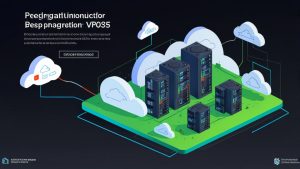1. Installing a Firewall
To protect the server from data leaks, it is necessary to install a firewall. A firewall is a program that controls incoming and outgoing traffic on the server. It can block unwanted connections and prevent the leakage of confidential information.
sudo apt-get install ufw2. Data Encryption
To protect data on the server, it is recommended to use encryption. Data encryption makes information unreadable to unauthorized persons and prevents its leakage. You can use tools such as OpenSSL for data encryption.
openssl enc -aes-256-cbc -in file.txt -out file.txt.enc3. Regular Security Audits
To prevent data leaks, it is necessary to conduct regular security audits of the server. A security audit allows you to identify vulnerabilities in the system and take measures to fix them. You can use specialized tools such as OpenVAS or Nessus to conduct audits.
4. Limiting Data Access
To ensure data security, it is necessary to limit access to it only to employees who need it to perform their job duties. It is necessary to establish strict access rights to files and resources on the server in order to prevent data leakage due to unauthorized access.
5. Software Updates
To protect the server from data leaks, it is necessary to regularly update the software. Updates contain security fixes that close vulnerabilities in the system and prevent potential data leaks. It is necessary to monitor the release of new versions of software and install them immediately.
6. Connection Encryption
To protect data when transmitted over the Internet, it is necessary to use connection encryption. Connection encryption (SSL/TLS) ensures the confidentiality of data during transmission and prevents its interception by attackers. To use connection encryption, you need to install an SSL certificate on the server and configure it correctly.
7. Employee Training
To prevent data leaks, it is necessary to train employees on information security rules. Employees should be aware of potential security threats and know how to prevent data leakage. Training may include conducting training sessions, creating security rules, and regularly testing employees’ knowledge.
8. Data Backup
To prevent data leaks, it is necessary to regularly create data backups. Backups allow you to restore data in the event of a leak or attack on the server. Backups can be created on external media or in cloud services. It is also necessary to check the operability of backups and their relevance.





